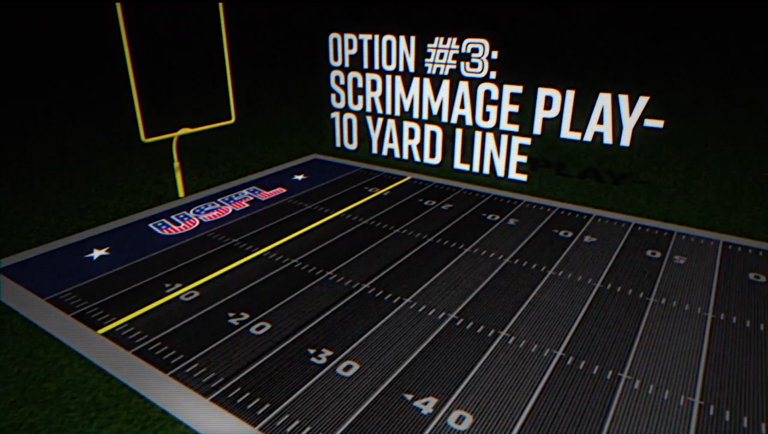Post-touchdown attempts are critical plays in Post Touchdown Attempt American football that follow a touchdown, providing teams with the opportunity to score additional points. These attempts can significantly influence the outcome of the game, adding a layer of strategy and excitement.
Understanding the Basics
To grasp post-touchdown attempts, we first need to understand a touchdown. A touchdown is scored when a team successfully carries the ball into the opponent’s end zone, earning six points. Once a touchdown is scored, the team has the chance to score extra points through a post-touchdown attempt.
Types of Post-Touchdown Attempts
There are two main types of post-touchdown Post Touchdown Attempt attempts: the extra point kick and the two-point conversion.
Extra Point Kick
The extra point kick, also known as the point after touchdown (PAT), involves the team attempting to kick the ball through the opponent’s goalposts from the 15-yard line. This is worth one point and is generally considered the safer and more straightforward option. Historically, the success rate for extra point kicks is quite high, around 94-95%, making it a reliable choice for teams.
Two-Point Conversion
A two-point conversion is a riskier play where the team attempts to score by advancing the ball into the end zone again from the two-yard line. Successfully completing this play earns the team two points. The two-point conversion involves more strategy and Post Touchdown Attempt carries a higher risk, with success rates typically hovering around 45-50%.
Historical Evolution
The rules and strategies surrounding post-touchdown attempts have evolved significantly. Initially, the extra point kick was almost automatic, but as teams and players improved, the distance for the kick was increased to make it more challenging. The two-point conversion was introduced to add more strategic depth to the game, allowing teams to opt for a potentially higher reward.
Strategic Considerations
Coaches must decide between attempting an extra point kick or a two-point conversion. This decision often hinges on the game situation, the team’s strengths, and statistical probabilities. For instance, teams trailing by a specific margin might opt for a two-point conversion to close the gap more quickly.
Famous Post-Touchdown Attempts in History
Several post-touchdown attempts have become legendary. For example, Tom Dempsey’s record-setting extra point kick in 1970 and the Philadelphia Eagles’ successful “Philly Special” two-point conversion during Super Bowl LII are etched in football history.
Impact on Game Outcomes
Post-touchdown attempts can dramatically affect the outcome of a game. Analyzing data reveals that teams with higher success rates in these attempts Post Touchdown Attempt often have better overall records. Case studies, such as the New England Patriots’ strategic use of two-point conversions, highlight their importance.
Rules and Regulations
The NFL has specific rules governing post-touchdown attempts. For instance, the ball is placed at the 15-yard line for an extra point kick and the two-yard line for a two-point conversion. College football has slight variations, reflecting different strategic approaches.
Influence on Fan Experience
Post-touchdown attempts add to the excitement for fans, who eagerly anticipate whether their team will go for a single or double score. These plays can change the game’s momentum, making them thrilling to watch.
Coaching Strategies
Coaches develop detailed playbooks and formations for post-touchdown attempts. They practice these plays extensively, ensuring that players are prepared Post Touchdown Attempt for various scenarios. This preparation can make the difference between winning and losing.
Technology and Analytics
Modern technology and analytics play a significant role in post-touchdown attempts. Coaches use data to analyze opponents’ tendencies and make informed decisions. Technological advancements, like video analysis and predictive modeling, have revolutionized this aspect of the game.
Common Misconceptions
There are several misconceptions about post-touchdown attempts. One common myth is that the extra point kick is always successful, which isn’t true. Another is that the two-point conversion is too risky, despite statistical evidence showing its strategic value in certain situations.
FAQs
What is a Post-Touchdown Attempt?
A post-touchdown attempt is an opportunity for Post Touchdown Attempt a team to score additional points after a touchdown through an extra point kick or a two-point conversion.
How Many Points is an Extra Point Worth?
An extra point kick is worth one point.
When Should a Team Attempt a Two-Point Conversion?
Teams typically attempt a two-point conversion when they need to quickly close the scoring gap or when the game situation makes it a strategic choice.
Has the Success Rate of Post-Touchdown Attempts Changed Over Time?
Yes, the success rates have evolved due to changes in rules, player skills, and strategic approaches.
Are There Any Proposed Changes to Post-Touchdown Rules?
The NFL continually reviews rules, and while there are no significant changes proposed currently. Minor adjustments are always possible to enhance the game’s competitiveness and fairness.
Conclusion
Post-touchdown attempts are a vital part of American football, blending strategy, skill, and excitement. Understanding the nuances of these plays can deepen our appreciation of the game and highlight the importance of every point scored.




